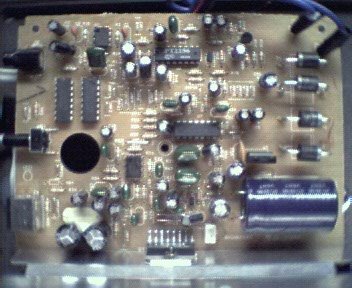The Altec Lansing ACS-45.2ís: Putting Up A Great Fight In A Crowded Market
As you may or may not know, the Altec
Lansing ACS-48 as reviewed here a few
months ago are my long time favorite 3-piece speakers. They possess an unusually
high level of build quality, sheer volume and donít manage to completely break
the bank. What happens when Altec markets a "little brother" version
of the 48ís for nearly half price? Are the 45.2ís half of the 48ís? In the
audio reproduction ring, the 45.2ís do more than just threaten the undisputed
champís of the sub $200 category; they render a few black eyes and low blows
before bowing out late in the match.
|
Specifications
|
The
Unit
|
- Driver (per satellite): One 3 inch full
range driver
- Driver (subwoofer): One 6.5 inch long
throw woofer
- Frequency Response: 35Hz Ė 20kHz
- Satellite Power: 6 Watts
- Subwoofer Power: 20 Watts
- Input Impedance: >10k ohms
- S/N Ratio: >65dB
- Built in Power Supply Included
- ETL/cETL approve
|
|
The Altec Lansing ACS-45.2 speakers are a three-piece
arrangement, consisting of an enclosed wooden subwoofer and two, single 3"
driver satellites. Along with top mounted power on and volume controls, the
sub volume knob resides at the very bottom of the 11 pound cabinet.
 I
would prefer a volume knob instead of up down buttons; however, since I use
the ACS-48ís on a regular basis, the dexterity required to operate this arrangement
has become habit long ago. Pressing both buttons down at the same time turns
the speakers on or off depending upon their previous state.
I
would prefer a volume knob instead of up down buttons; however, since I use
the ACS-48ís on a regular basis, the dexterity required to operate this arrangement
has become habit long ago. Pressing both buttons down at the same time turns
the speakers on or off depending upon their previous state.
A green LED glows signifying that the 45.2ís are indeed on and ready to blast
out the sounds of your choice. The subwoofer
enclosure design represents somewhat of a departure from normal for Altec.
The 6.5" driver fires downward and
the wooden box can only be set as pictured above. Placing the enclosure on
its side can scratch the finish, but also reveal significant air "chuffing"
noises from the plastic underside woofer grille.
Inner Construction & Measurements
Since I am a self appointed audio nut, I prefer
to find out exactly why things work as they do. I would never recommend to
the casual user to attempt any of the partial disassembly that will be analyzed
in this review. With that said, the anticipation grew enormously as I located
my Craftsman #2 Phillips head screwdriver and began removing every screw possible.
Once the outer bottom plastic assembly was removed,
I gained a much better understanding as to why the 45.2ís sound as good as
they do. Upon unpacking the subwoofer, I glanced haphazardly at the box, but
did not spy any evidence of a port. With the plastic lower housing gone, I
found the port.
 It
is actually open all the way inside to the air space where the
driver resides. Altecís engineers had a two-fold purpose with this port: bass
frequency extension and amplifier heat sink cooling. Rather a clever design,
donít you agree?
It
is actually open all the way inside to the air space where the
driver resides. Altecís engineers had a two-fold purpose with this port: bass
frequency extension and amplifier heat sink cooling. Rather a clever design,
donít you agree?
 Speaking of heat sinks, the lone amplifier chip, an SGS-Thomson TDA 7375 is
affixed to a large flat unit that protrudes well into the woofer port. Although
slightly difficult to see in the picture, the PC board (PCB) layout reveals
a clean, efficient design with the aluminum heat sink at the bottom.
Speaking of heat sinks, the lone amplifier chip, an SGS-Thomson TDA 7375 is
affixed to a large flat unit that protrudes well into the woofer port. Although
slightly difficult to see in the picture, the PC board (PCB) layout reveals
a clean, efficient design with the aluminum heat sink at the bottom.
Note the large blue power supply capacitor. Itís
value is 10,000 uF at 25 Volts, which is larger than the 2-4700 uF 35 Volt
capís located on the PCB of the ACS-48ís. The idling voltage across the capís
leads measured 18 Volts DC, which puts
the TDA 7375 at its recommended maximum voltage.
When listening at maximum volume, this value drops to 16 Volts which calculates
to a max output power of 24 watts for the sub and just under 7 watts for each
satellite for a 1% distortion level. I really appreciate Altec for not over-rating
their amplifiers. Weíve all seen the advertisements: 400 watts peak for only
$19.99-- ridiculous meaningless numbers.